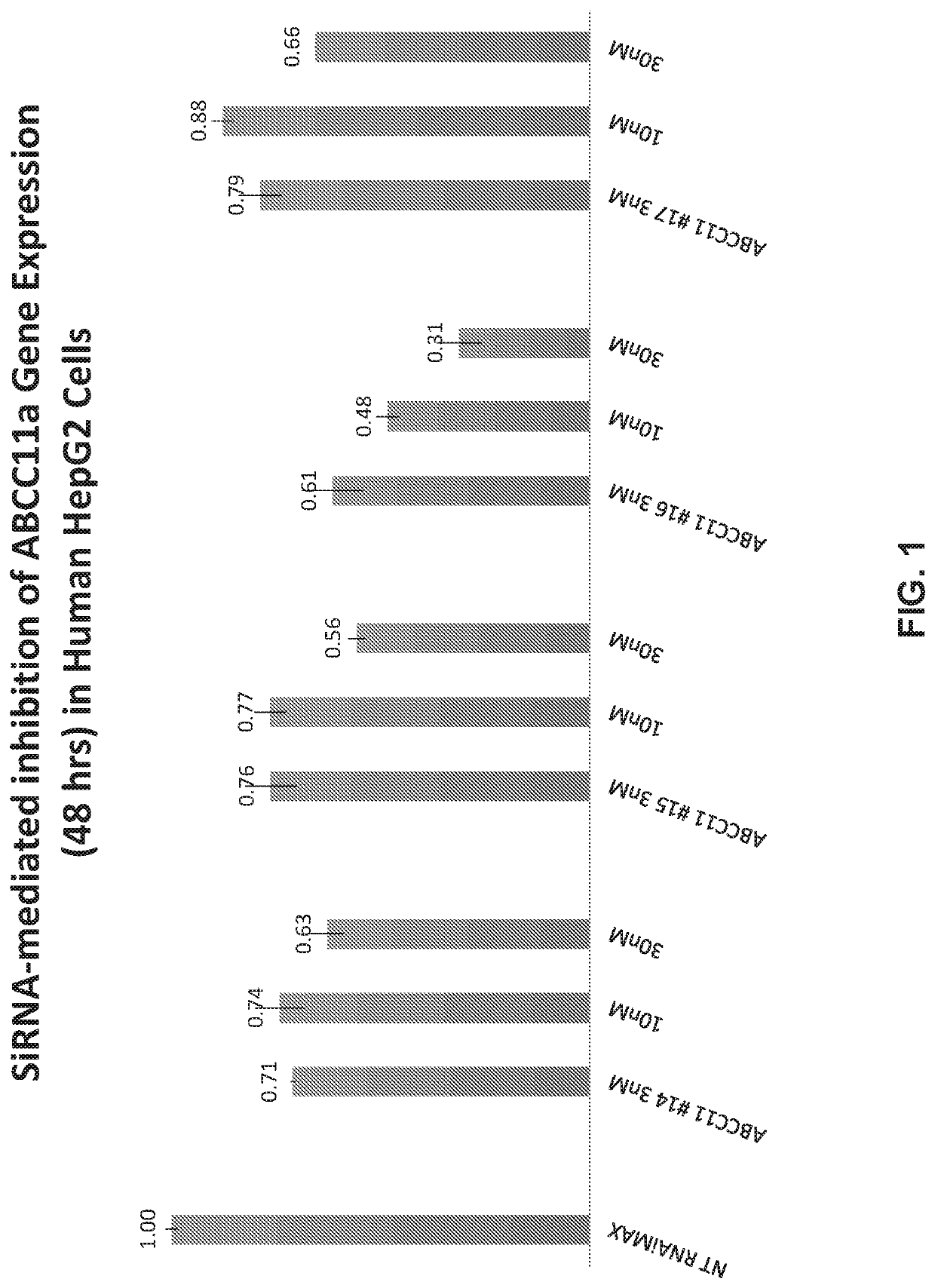Methods of treating osmidrosis
a technology of osmidrosis and osmidrosis sp., which is applied in the field of methods of treating osmidrosis, can solve the problems of body odor, excessive sweat, and bacterial degradation of keratin and a corresponding foul smell, and achieves the effects of reducing the number of patients and improving the quality of li
- Summary
- Abstract
- Description
- Claims
- Application Information
AI Technical Summary
Benefits of technology
Problems solved by technology
Method used
Image
Examples
example embodiments
[0031]An initial overview of invention embodiments is provided below and specific embodiments are then described in further detail. This initial summary is intended to aid readers in understanding the technological concepts more quickly, but is not intended to identify key or essential features thereof, nor is it intended to limit the scope of the claimed subject matter.
[0032]The human ATP-binding cassette (ABC) transport gene (ABCC11), having the gene sequence of SEQ ID NO: 1, encodes an ATP-driven efflux pump protein that has a key role in secretion of components of cerumen (earwax) and body odor precursors from apocrine glands. Expression of wildtype ABCC11 results in wet type earwax and osmidrosis while expression of a single-nucleotide polymorphism (SNP) version (538G→A, Gly180Arg, r517822931) results in the dry type earwax and no osmidrosis. There is a strong association of the ABCC11 SNP with both osmidrosis and the earwax type. For example, a dominant inheritance pattern of ...
example
[0164]Human HepG2 liver cells (seeded onto 96 well plates at 0.3×105 cells per well from stock cultures from an ˜80% confluent T75 tissue culture flask (cultured in RPMI supplemented with 10% fetal bovine serum, 1 mM sodium pyruvate, pen / strep antibiotics and glutamine as well as 1×MEM NEAA solution) were transfected (using RNAiMax, ThermoFisher) with 3 nM, 10 nM, or 30 nM of each of four distinct siRNAs (containing Accell self-delivery and stability modifications proprietary to GE Life Sciences / Dharmacon Division) targeting ABCC11. After a 48-hour incubation period in a 37° C. CO2 incubator, cells were harvested, RNA extracted and subjected to RT-qPCR using TaqMan primer / probe sets (ABCC11 probe cat # Hs01090768 ml ABCC11 FAM and hGAPDH probe cat # Hs99999905 ml GAPDH FAM). The results are illustrated in FIG. 1. The resulting data were normalized to GAPDH and demonstrate that ABCC11 #16 siRNA treatment results in 69% inhibition from baseline levels. Further, each of the siRNAs empl...
PUM
| Property | Measurement | Unit |
|---|---|---|
| length | aaaaa | aaaaa |
| length | aaaaa | aaaaa |
| length | aaaaa | aaaaa |
Abstract
Description
Claims
Application Information
 Login to View More
Login to View More - R&D
- Intellectual Property
- Life Sciences
- Materials
- Tech Scout
- Unparalleled Data Quality
- Higher Quality Content
- 60% Fewer Hallucinations
Browse by: Latest US Patents, China's latest patents, Technical Efficacy Thesaurus, Application Domain, Technology Topic, Popular Technical Reports.
© 2025 PatSnap. All rights reserved.Legal|Privacy policy|Modern Slavery Act Transparency Statement|Sitemap|About US| Contact US: help@patsnap.com

